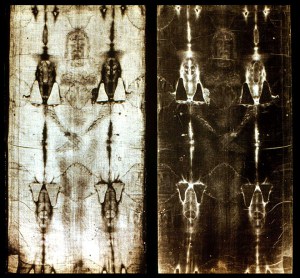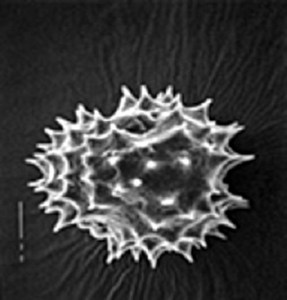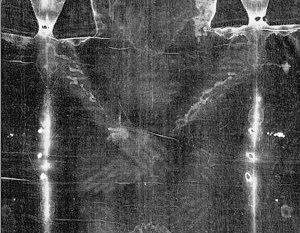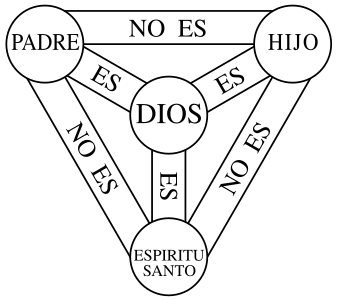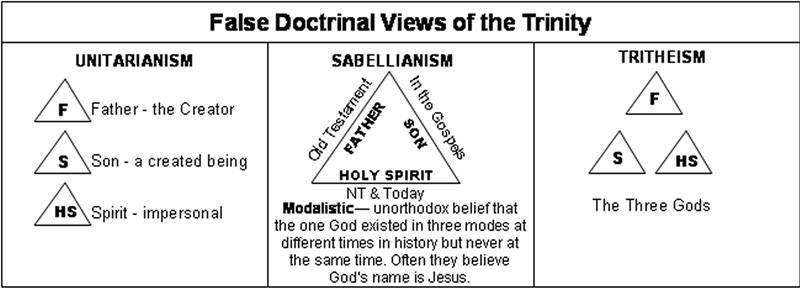By Aaron Brake
Here’s a statement that may seem controversial at first, but upon reflection, the truth becomes more apparent:
If God does not exist and there is no life after death, then there is no ultimate meaning, value, or purpose in life.
The question of God’s existence is the most central and important question we can try to answer. If God does not exist and we do not survive the death of our bodies, life is ultimately absurd. J.P. Moreland provides an illustration that helps bring this truth home:
Suppose I invited you over to my house to play a game of Monopoly. When you arrive, I announce that the game will be a little different. Before us is the Monopoly board, a set of jacks, a coin, the television remote, and a refrigerator in the corner of the room. I grant you the first turn, and disconcertingly, inform you that you can do whatever you want: fill the board with hotels, flip the coin, toss a few jacks, make yourself a sandwich, or turn on the television. You respond by placing hotels all over the board and smugly sit back to wait my turn. I respond by turning the board upside down and flipping the coin. Somewhat annoyed, you right the board and replace the hotels. I turn on the television and knock the board over again.
Now, it wouldn’t take too many cycles of this nonsense to recognize that it didn’t really matter what you did with your turn, and here’s why. There is no goal or purpose to the game we’re playing. Our successive turns form a meaningless series of events one after another. Why? Because if the game as a whole has no purpose, then individual moves within the game are meaningless. On the contrary, only the actual purpose of a game according to its inventor can give the individual move any significance.[1] .
As Moreland puts it, if the game of Monopoly as a whole has no purpose, then individual moves within the game have no meaning or value. The only way your moves within the game of Monopoly matter is if you discover the purpose of the game and align yourself with that purpose.
As it is with Monopoly, so it is with life. Like the game of Monopoly, the only way our individual lives have any ultimate meaning or value is if life has a purpose behind it, and true purpose requires both God and life after death.
To help think about this, let’s assume that God does not exist. In an atheistic scenario, we as human beings are simply recent biological accidents on an insignificant speck of dust we call Earth hurtling through empty space in a meaningless, random universe that will eventually die a hot, cold death. In the grand scheme of things, we are no more important than a swarm of mosquitoes. In a universe where there is no God and no afterlife, our actions are meaningless and serve no purpose because ultimately each of us, along with everyone we know and influence, will die and enter oblivion. There is no difference between living the life of a saint or a sociopath, no difference between a Mother Teresa and an Adolf Hitler. Talk of purpose, morality, meaning, purpose, or value is simply incoherent babble. William Lane Craig frequently refers to this as “the absurdity of life without God.”[2] He states that,
Without God, the universe is the result of a cosmic accident, a chance explosion. There is no reason for it to exist. As for man, he is a freak of nature: a blind product of matter plus time plus chance. If God does not exist, then you are just a mistake of nature, thrust into a meaningless universe to live a purposeless life… the end of it all is death… In short, life is completely without reason… Unfortunately, most people do not realize this fact. They carry on as if nothing has changed.[3] .
The cure for apathy
It seems to me that when we honestly reflect on the absurdity of life without God we cannot, at the same time, remain apathetic to the question of God’s existence. God’s existence matters and has tremendous implications for our own existence. The absurdity of life without God should disturb us. It should keep us up at night. It should shake us out of our apathetic attitude and challenge us to seek answers to life’s fundamental problems. Unfortunately, this is not the case, especially in our information age where it is all too easy to remain distracted and caught up in the day-to-day hustle and bustle of life. Sadly, many people can simply go about their day without even giving life’s most important questions a second thought.
But if we want to be intellectually honest, and if we care about real meaning, value, and purpose, the question of God’s existence demands our attention. We ignore this issue and remain apathetic only at our own peril. As Brian Auten has stated, “the wise man seeks God.”[4] For the reasonable person, reflection on the absurdity of life without God should be enough to extinguish any remaining apathy regarding the question of God’s existence.
Perhaps then, apathy (or apatheism) is not something that can be changed directly—that is, it is not something that can simply be cast aside through direct effort. Rather, like our other beliefs, apathy must be changed indirectly. If apatheism is the belief that “God’s existence is not meaningful or relevant to my life,” perhaps reflecting on the absurdity of life without God will be powerful enough to indirectly change apathetic beliefs and help communicate the importance of taking God and other issues seriously.
The inconsistent atheist
I have never met an atheist who lives consistently with the implications of his naturalistic worldview. Even though he rejects both God and the afterlife, he continues to live his life as if his actions have true meaning, value, and purpose. As Craig said above, “they carry on as if nothing has changed.” Atheists reject God, but they still desire meaning, value, and purpose in life, so they undoubtedly find something to give their devotion to, whether it be themselves, family, money, pleasure, education, work, social causes, or politics. But neither does any of these subjective pursuits have ultimate importance or objective value in a world without God. In the end, the atheist must borrow from the Christian worldview in order to infuse his own life and actions with true meaning and purpose. This is because atheism and the naturalistic worldview offer no hope and provide no basis for meaning and value. Ken Samples states that,
Naturalism as a worldview seems incapable of offering the kind of meaning, purpose, and hope that humans require and long to experience. Instead, the ultimate fate of the individual, humanity, and even the universe will inevitably be the same regardless of what any one person can do. Nothing anyone thinks, says, or does will change the fact that each individual person, all of humanity collectively, and the universe itself (due to entropy) will one day be completely extinct, lifeless, and cold. The result of naturalism is inevitable hopelessness.[5] .
In other words, naturalism fails the existential test. Honest atheists cannot live happily and consistently with their worldview. If atheism is true, and if atheists honestly reflect on their own nonexistence and the fact that their actions in this life have no ultimate meaning, value, or purpose, it seems difficult to avoid overwhelming feelings of depression, despair, and gloom. No wonder then that some atheists have turned to nihilism. Christianity, on the other hand, succeeds exactly where atheism fails:
Biblical Christianity, therefore, provides the two conditions necessary for a meaningful, valuable, purposeful life: God and immortality. Because of this, we can live consistently and happily within the framework of our worldview. Biblical Christianity therefore succeeds precisely where atheism fails… Therefore, it makes a great deal of difference whether God exists.[6] .
An atheist replica?
Some atheists object at this point: “But I do have a purpose in life. I have meaning.” In a 2010 debate titled ” Does the Universe Have a Purpose ?” skeptic Michael Shermer offers four things that enable people to feel happier, more fulfilled, and more purposeful in life, regardless of whether God exists:[7]
- Deep love and family commitment.
- Meaningful work and a career.
- Social and political participation.
- A feeling of transcendence.
Later in the debate, Shermer goes on to say,
Don’t you think that even if there isn’t a God, you should still find some purpose?… Maybe there is a God, maybe not. Either way, don’t you think you should roll up your sleeves and see if you can figure out some useful things to do to give yourself purpose outside of God? Don’t you think that’s worth it?… Shouldn’t I be doing these good things for other people? Shouldn’t I be finding love and commitment with someone, a meaningful career, helping my social community and getting involved in politics, trying to better myself and do something outside of myself? Shouldn’t I be doing those things anyway?
But notice that Shermer here completely misses the point, which is this: if there is no God, then there is no ultimate goal , meaning, value, and purpose in life. Sure, you can create subjective meaning and purpose if you so choose. You can live for some personal, subjective cause or reason that makes you happy. You can even do good things regardless of whether God exists or not. But Shermer offers no reason or explanation as to why , if God doesn’t exist, none of these things are objectively good, or why none of these things are objectively meaningful, valuable, or useful, or why we should pursue these goals rather than others that might make us happier and more fulfilled. In the end, it doesn’t matter, objectively speaking, whether you pursue these goals or not, because in the end, it all ends up the same anyway: you die, I die, the universe dies, and that’s all there is to it. Christian theist William Lane Craig offered this retort to both Shermer and Richard Dawkins in the debate:
There was a major shift in the last two speeches in this debate. Did you see what it was? We’ve argued tonight first of all that if God doesn’t exist, then the universe has no purpose. Our atheist colleagues admit that. But now what they’ve been saying is, “But look, we can build purpose into our lives,” in the words of Richard Dawkins, or in the words of Michael Shermer, “We can develop ways of making ourselves feel better by feeling as if we had a purpose.” Now you see that this is just to say that we can pretend that the universe exists for some purpose, and this is just fantasy. This is the subjective illusion of purpose, but in this view there is no objective purpose of the universe. And we, of course, will never deny that you cannot develop subjective purposes for your life. The point is about atheism, they are all illusory… But you cannot live as if your life is purposeless and meaningless, and therefore you adopt illusions of purpose to make your life livable. And that’s why I believe atheism is not just irrational; it’s deeply unlivable. You cannot live consistently and purposefully within the context of an atheistic worldview.
Ironically, this debate was titled “ Does the Universe Have a Purpose ?” Of course, if atheism is true, there was no ultimate meaning, value, or purpose in the debate. In the final scheme of things, it doesn’t matter whether the debate happened or not (nor does it matter whether you heard about it or not). In coming forward to defend the atheistic perspective, Michael Shermer, Richard Dawkins, and Matt Ridley all implicitly acknowledge at least some subjective meaning , value, and purpose in the debate. And if atheism is true, subjective meaning is all there could be. Any ultimate meaning is illusory.
Conclusion
Jesus said, “This is eternal life, that they may know you, the only true God, and Jesus Christ whom you have sent…and for this purpose I have come into the world, to bear witness to the truth. Everyone who is of the truth hears my voice” (John 17:3, 18:37).
True meaning, value, and purpose come from knowing God and making God known. In answer to the question, “What is the chief end of man?” the Westminster Confession answers, “To glorify God and enjoy him forever.” But it is not enough to simply understand this purpose and assent to its truth. For our individual lives to have real meaning, we need to willingly align ourselves with this truth, and that means aligning ourselves with Jesus Christ, the author and finisher of our faith (Heb. 12:2).
Grades
[1] J.P. Moreland, The God Question: An Invitation to a Life of Meaning (Eugene: Harvest House, 2009), 34–35.
[2] See William Lane Craig, Reasonable Faith: Christian Truth and Apologetics , 3rd ed . (Wheaton: Crossway, 2008), chapter 2, and On Guard: Defending Your Faith with Reason and Precision (Colorado Springs: David C. Cook, 2010), chapter 2.
[3] Craig, On Guard , 37.
[4] See his essay “The Wise Man Seeks God” available at http://www.apologetics315.com/2010/05/essay-wise-man-seeks-god-by-brian-auten.html .
[5] Kenneth Richard Samples, A World of Difference: Putting Christian Truth-Claims to the Worldview Test (Grand Rapids: Baker Books, 2007), 217.
[6] Craig, On Guard , 49–50 (his italics).
[7] This debate is available in its entirety here: http://www.apologetics315.com/2010/11/does-universe-have-purpose-audio-debate.html
Translated by Maria Andreina Cerrada




